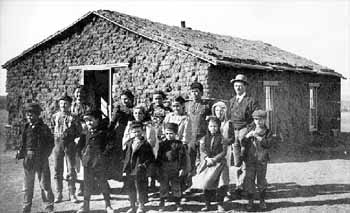D.Tyack The One Best System (1974) Notes on Pt 1
Prologue
In The One Best System (1974), Tyack “attempts to assess how the schools shaped, and were shaped by, the transformation of the United States into an urban-industrial nation” (p. 3). By taking a systemic approach to the issue of “‘modernizing’ forces” of the 20th century, and historicizing the bureaucratization of urban schools, he seeks to shift the focus off of fixing schools by fixing teachers and the students, who are caught within an achievement gap codified by the discourse communities of privilege.
The following is Tyack’s list of “persistent problems and misconceptions” (p. 11) surrounding the approaches to solving issues within the American educational system:
- The search for the one best system has ill-served the pluralistic character of american society.
- Increasing bureaucratization of urban schools has often resulted in a displacement of goals and has often perpetuated positions and outworn practices rather than serving the clients, the children to be taught.
- Despite frequent good intentions and abundant rhetoric about “equal educational opportunity,” schools have rarely taught the children of the poor effectively- and this failure has been systematic, not idiosyncratic.
- Talk about “keeping the schools out of politics” has often served to obscure actual alignments of power and patterns of privilege.
- Americans have often perpetuated social injustice by blaming the victim, particularly in the case of instituational racism.
Overall, his book seeks to illuminate the central misprision of America’s fight to fix/villainize urban schools as the problem and primary source for social injustice an ineqaulity, and, instead, desires to reintepret this history to explore the more nuanced issues that still remain in the quest for the “one best system” today.
Part I :: Modernizing Rural Education (1890- )
Tyack historicizes the rural education situation of the late 19th century as primarily a gathering place for the community. He uses primary accounts from community members to introduce the schoolhouse as but one of the many components of rural life. School was never mandatory, and due to the demands of a life-agricultural, children often missed school to work at home. Teachers were often “young, inexperienced, and poorly trained” (p. 19). And, as Tyack notes, “teachers were sometimes no match for the older pupils,” meaning that faculty sometimes fought with students, noting a principal in Klamath Falls, OR who lost to a student in a fight and then was suspended from his position “by the board–presumably for losing, not for fighting (which was common).”
The schoolhouses were often derelict, and the “‘curriculum’ of the rural school,” says Tyack, “was often whatever whatever textbooks lay at hand” (p. 19), most of which were brought from home and were and many students brought Bibles.

Due to these conditions and circumstances, “The Rural School Problem” emerged in the discourse, beginning in the late 19th century. Reformers studied the conditions of the rural educational system, concluding that its “corruption” (p. 22) was the fault of the rural communities and their ill-management of its scope and execution. “If the country people had botched it,” summarizes Tyack, “then the only recourse was for the professionals to take over” (p. 23). Equal opportunity was the end, and the means to this end was “a standardized, modernized ‘community’ in which leadership came from the professionals,” implying that the rural community, who originally upheld and transfered these values to their children, be replaced in this regard. To not do so, according to the reformers of the time (led by the NEA), would be a failing upon their part and the students, who needed to fill the emerging industrialzed roles of the nation.
Rural communities did not simply roll over in this fight. According to Tyack, many rural communities were, of course, “dissatisfied with their school buildings and with an archaic curriculum, but they wanted to control their own schools” (p. 25). (future note here: add link to later post on connections between this issue, MOOCs, Common Core, and OLPC deployments in non-Western countries) Instead, though, both ideas and the execution of the ideas to reorganize and reshape the landscape of schools in rural settings stemmed from “the cities schoolmen,” who “pioneered new bureaucratic patterns of educational organization.”
Consequently, the values of the local community became more and more contested against the values operating in the larger institutions encroaching on their way of life. This direct confrontation of values and power made evident to some the fragility and finality of becoming a “voluntary community in a mass society” (p. 27). The goals of modernity blinded many to the issues of communal loss of identity and autonomy with the promise of preparing youth for a life in a new “complex urban world.” Tyack’s historical re-reading of this “microcosm in the countryside” is then used as a platform to see how these events, actions, and discourses met the urban sprawls of the time.
